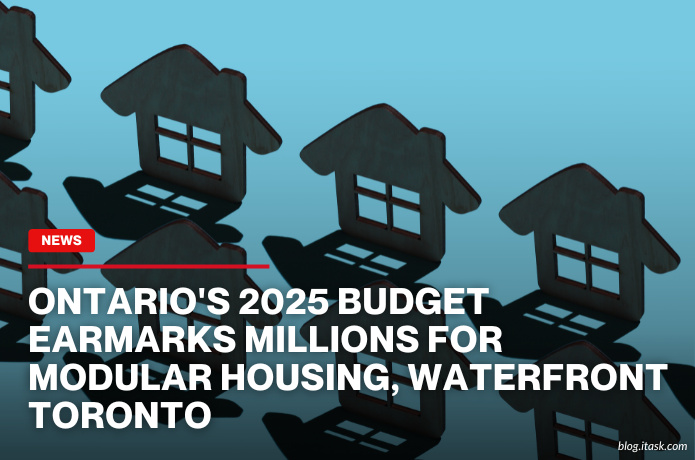Ontario's 2025 Budget Earmarks Millions For Modular Housing, Waterfront Toronto
Ontario's 2025 Budget Earmarks Millions For Modular Housing, Waterfront Toronto

Ontario’s 2025 budget, presented by Finance Minister Peter Bethlenfalvy, includes bold plans to boost the housing sector and revitalize key infrastructure across the province. Facing pressures from slowing housing starts—projected at just 71,800 in 2025 and 74,800 in 2026—the government recognized it will fall short of its goal to build 1.5 million new homes by 2031. To counter the slowdown, the budget carves out billions of dollars aimed at jump‑starting home construction and upgrading critical services.
A central pillar of the plan is a $2 billion commitment, spread over four years, to the Housing‑Enabling Water Systems Fund and the Municipal Housing Infrastructure Program. Of this, $1.3 billion targets drinking water, wastewater, and stormwater projects to support about 600,000 new homes. Another $400 million funds core servicing infrastructure across 58 municipal projects, enabling around 160,000 new housing units. A further $175 million ensures water safety and wastewater protection, especially in the face of extreme weather. Seeing strong demand from municipalities, the province adds $400 million in short-term funding, including $35 million focused on expanding water recovery facilities in Peel, potentially unlocking nearly 47,000 new units.
Infrastructure investment doesn’t stop there. Ontario is injecting a $5 billion top-up into the Building Ontario Fund, which supports broader infrastructure projects. A dedicated portion of those dollars will go toward affordable housing infrastructure, developed in cooperation with institutional investors. By widening the funding lens to include housing partners beyond government, Ontario signals it's seeking sustained and scalable investment in housing solutions.
On the innovative housing front, the budget also includes a $50 million commitment over five years to boost modular, or prefabricated, housing. Delivered via Invest Ontario, this funding is meant to help modernize production lines, bring in new technologies, and scale up capacity. Ontario hopes this jumpstart will make factory-built homes more readily available and affordable.
Crucially, the province is also investing heavily in the revitalization of Toronto’s waterfront through Waterfront Toronto. A total of $975 million, shared equally between the federal and municipal governments, is allocated to accelerate development in areas like Quayside and the new island of Ookwemin Minising. Ontario’s share—up to $325 million over seven years—will fund site servicing for over 14,000 homes, create skilled‑trade jobs, and add an estimated $13.2 billion to the economy. Earthworks and infrastructure work begin in 2025, aiming for the first residents by 2031.
These measures collectively reflect a shift toward tackling the housing crisis from multiple angles: ensuring municipalities have the plumbing backbone to support new neighbourhoods, investing in modern construction methods to speed delivery, and reinvigorating urban districts with large-scale partnerships. While the province plans to balance its books by 2027‑28, housing and infrastructure received top priority in this year’s spending blueprint. Only time will tell whether these steps are enough to make Ontario’s housing targets a reality.
